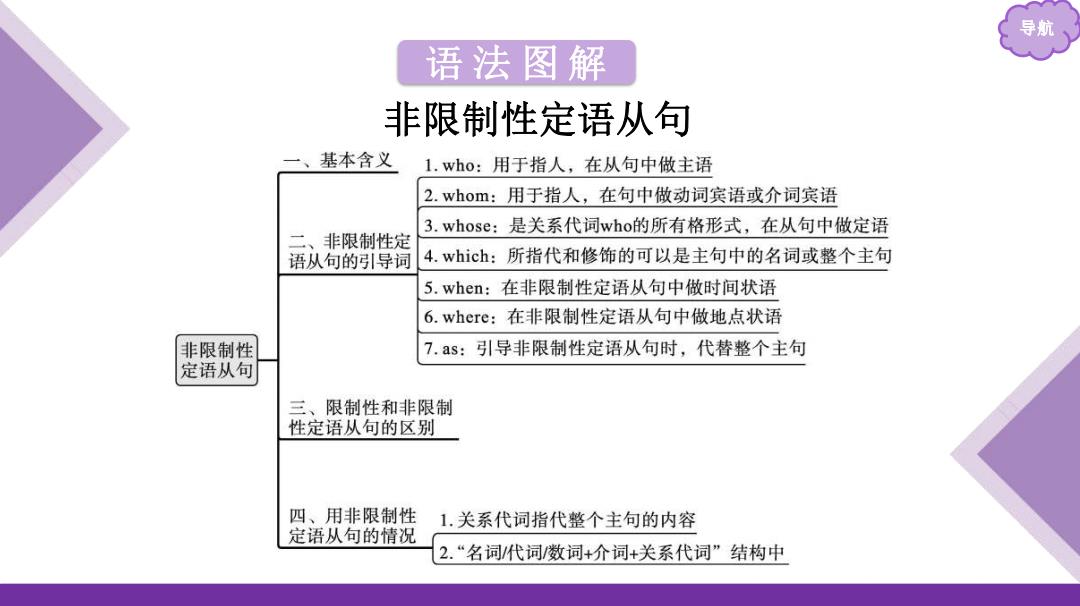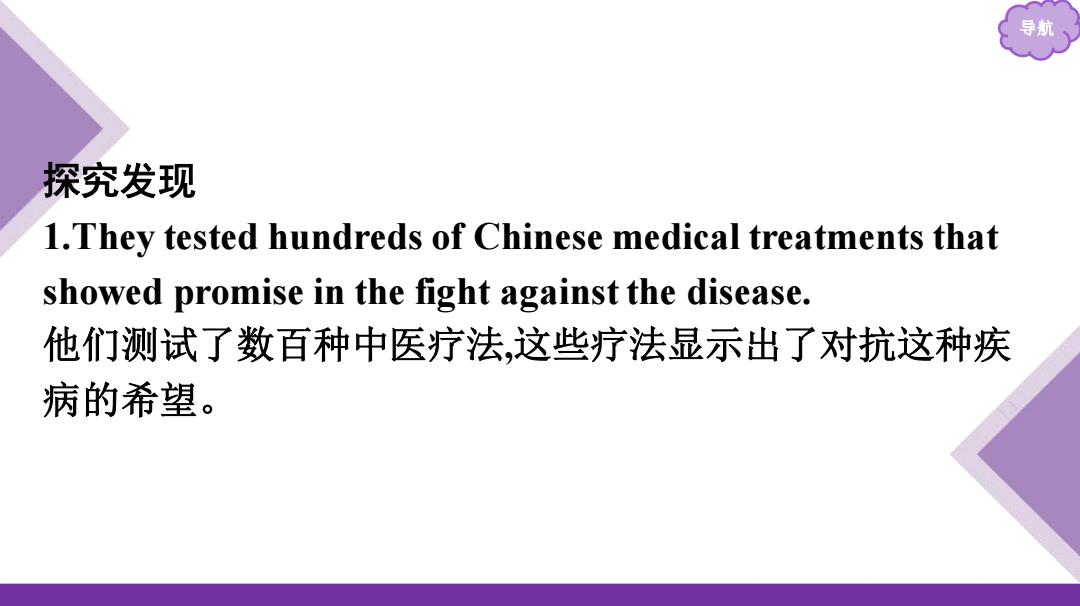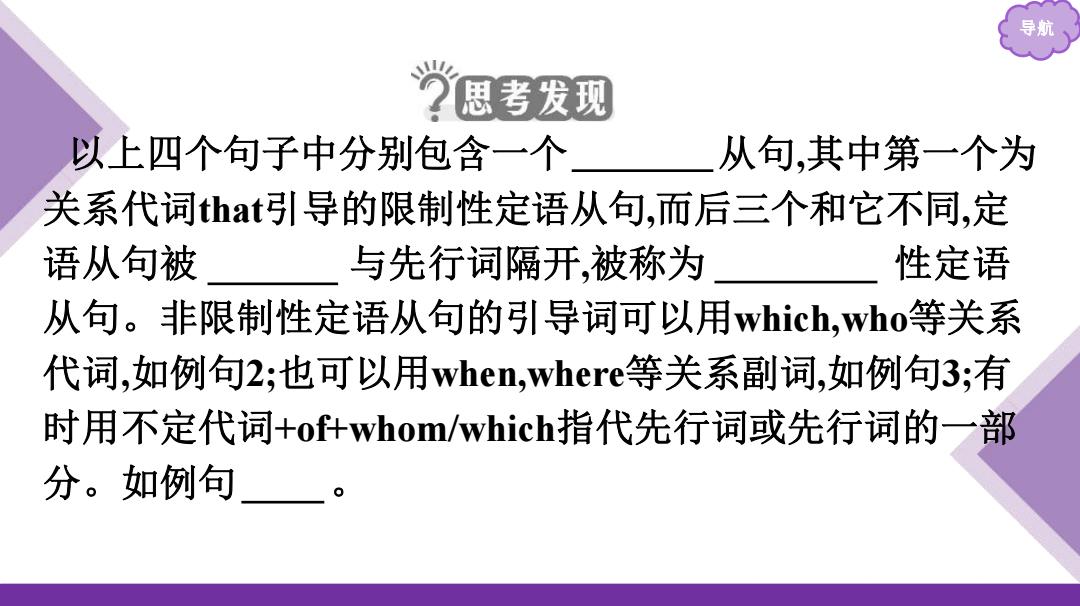
导航 语法图解 非限制性定语从句 、 基本含义 1.who:用于指人,在从句中做主语 2.whom:用于指人,在句中做动词宾语或介词宾语 3.whose: 是关系代词who的所有格形式,在从句中做定语 二、非限制性定 语从句的引导词 4.which:所指代和修饰的可以是主句中的名词或整个主句 5.when:在非限制性定语从句中做时间状语 6.where.:在非限制性定语从句中做地点状语 非限制性 7.as:引导非限制性定语从句时,代替整个主句 定语从句 三、限制性和非限制 性定语从句的区别 四、用非限制性 1.关系代词指代整个主句的内容 定语从句的情况 2.“名词/代词/数词+介词+关系代词”结构中
导航 语 法 图 解 非限制性定语从句

导航 探究发现 1.They tested hundreds of Chinese medical treatments that showed promise in the fight against the disease. 他们测试了数百种中医疗法,这些疗法显示出了对抗这种疾 病的希望
导航 探究发现 1.They tested hundreds of Chinese medical treatments that showed promise in the fight against the disease. 他们测试了数百种中医疗法,这些疗法显示出了对抗这种疾 病的希望

导航 2.Tu Youyou was awarded the Nobel Prize,which is considered one of the highest international honours a person can receive. 屠呦呦获得了诺贝尔奖,这是个人可以获得的最高国际荣誉 之一
导航 2.Tu Youyou was awarded the Nobel Prize, which is considered one of the highest international honours a person can receive. 屠呦呦获得了诺贝尔奖,这是个人可以获得的最高国际荣誉 之一

导航 3.Tu Youyou went to Hainan,where malaria was more common,to study malaria patients. 屠呦呦奔赴疟疾更为常见的海南研究疟疾患者。 4.Later,the medicine was tested on malaria patients,most of whom recovered. 随后,该药物试用于疟疾患者,其中大多数人康复了
导航 3.Tu Youyou went to Hainan,where malaria was more common,to study malaria patients. 屠呦呦奔赴疟疾更为常见的海南研究疟疾患者。 4.Later,the medicine was tested on malaria patients,most of whom recovered. 随后,该药物试用于疟疾患者,其中大多数人康复了

导 ?思考发现 以上四个句子中分别包含一个 从句,其中第一个为 关系代词that引导的限制性定语从句,而后三个和它不同,定 语从句被 与先行词隔开,被称为 性定语 从句。非限制性定语从句的引导词可以用which,who等关系 代词,如例句2;也可以用when,wheres等关系副词,如例句3;有 时用不定代词+of+whom/which指代先行词或先行词的一部 分。如例句
导航 以上四个句子中分别包含一个 定语 从句,其中第一个为 关系代词that引导的限制性定语从句,而后三个和它不同,定 语从句被 逗号 与先行词隔开,被称为 非限制 性定语 从句。非限制性定语从句的引导词可以用which,who等关系 代词,如例句2;也可以用when,where等关系副词,如例句3;有 时用不定代词+of+whom/which指代先行词或先行词的一部 分。如例句 4